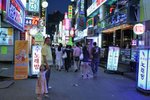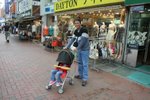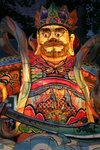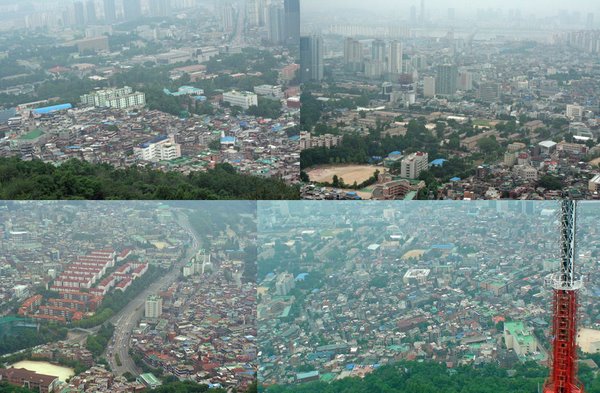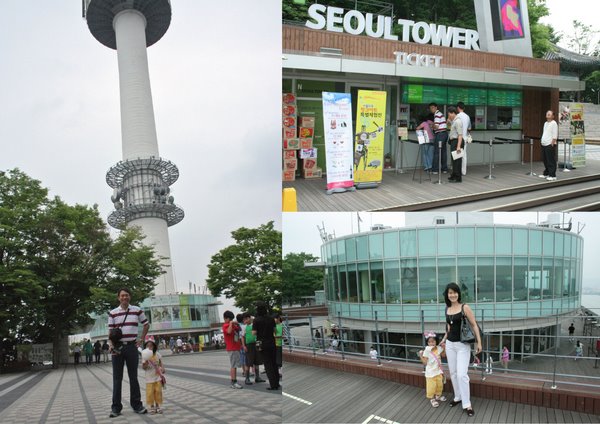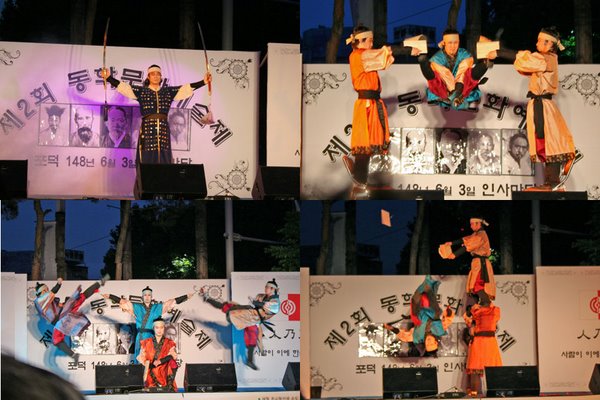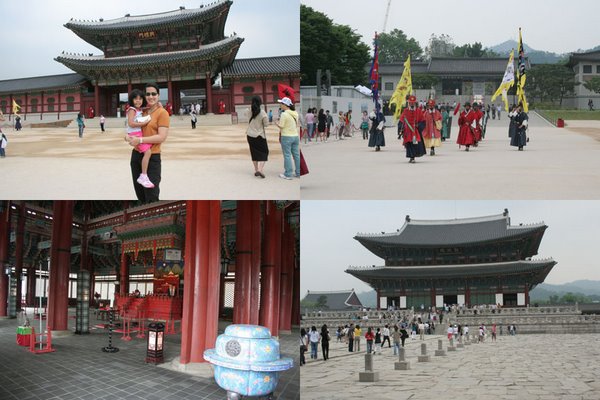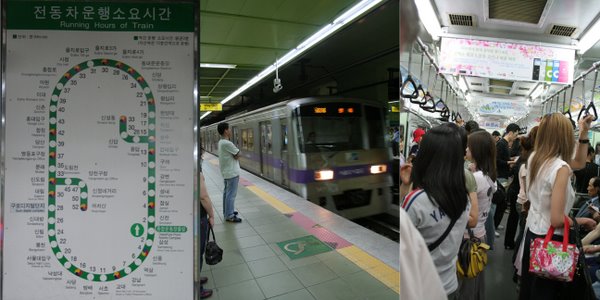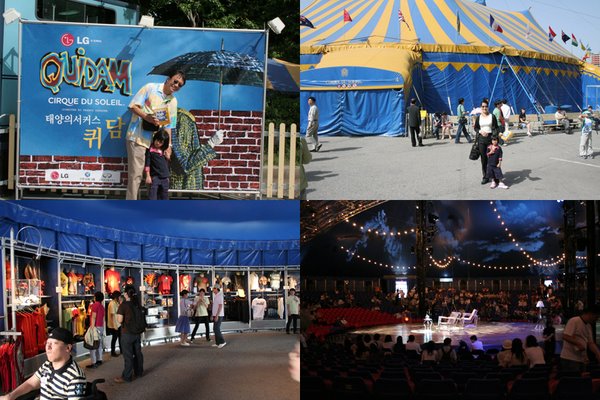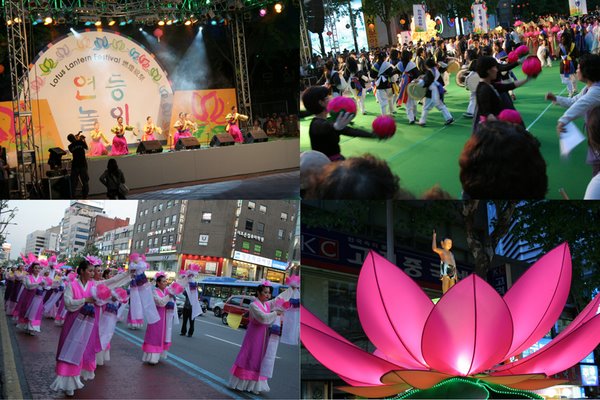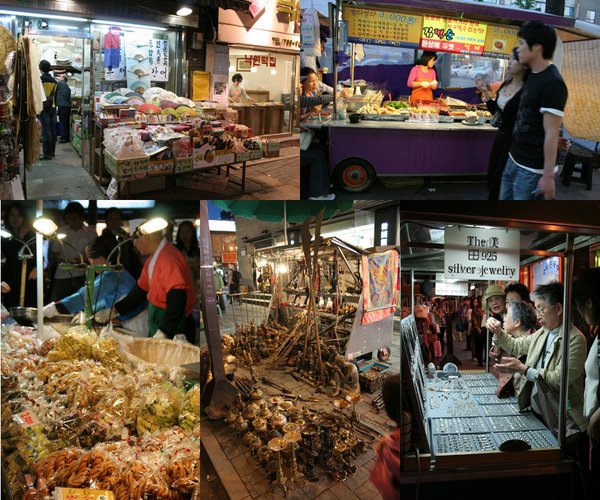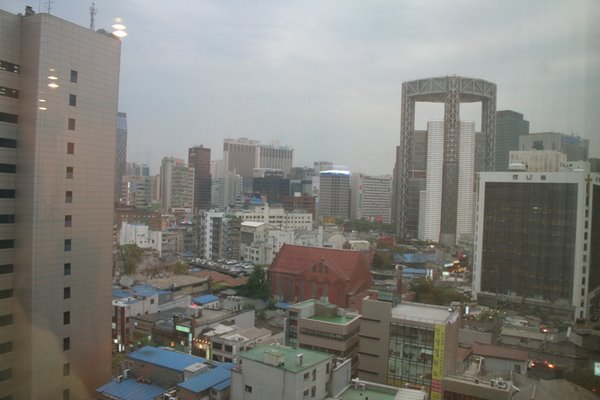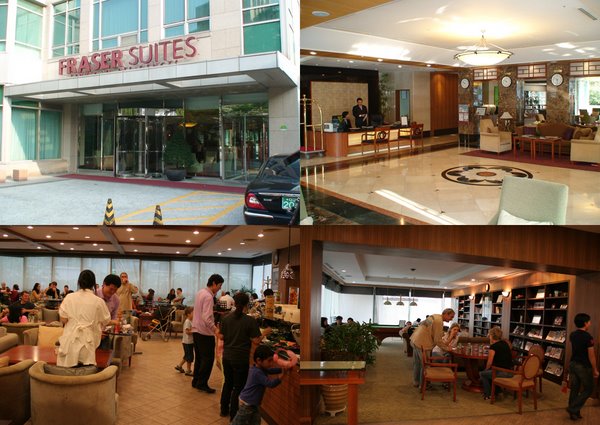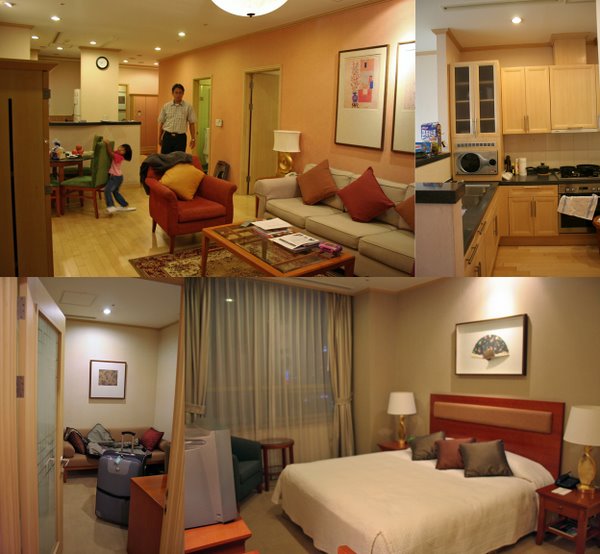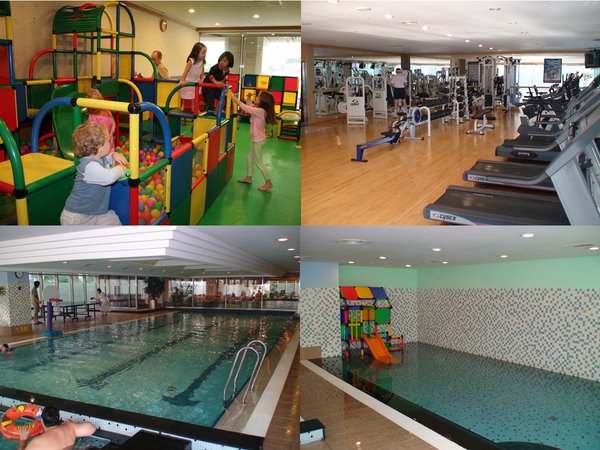26 May 2007
I'm a member of Virtual Tourist, a website wherein the members relate their experiences from trips to different places around the world and share tips regarding accomodation, shopping, transportation, and the like (including where you are from). Before I left for Seoul, one of the questions I asked was where would be the best place I could shop for groceries and household items. A common answer given was that I order through the Internet because this would always come out cheaper. I immediately checked out the different sites but unfortunately, all were in Korean except for one ....
South Korea has the largest online population in the world, with 83 per cent of the country's residents connected to the internet. As such, Koreans love to shop online and they are second only to the United States in terms of the size of the market; which is estimated to be around US$ 10 Billion this year (and growing). There are dozens of internet shopping websites to choose from and the most popular web portal is Korean: www.naver.com/.
While "surfing" the various Korean shopping websites, I discovered only one site, Gmarket, that offered an English alternative. Initially, I was thrilled about this but it did not last long as I realized that the offerings were limited. After placing the order for the few items we chose from the English website, I then clicked on the Korean Gmarket website to check on the items we were missing out on. I would click on the picture of a particular item but the text of the descripition and specifications remained to be Korean. However, I began noticing that the items I had clicked on remained on the rightmost column as a "List of Items Reviewed". I took a chance and switched back to the English site and to my surprise, the list remained on the screen. From thereon, I was able to either save the particular item on my Wish List or purchase this outright because I was in the environment wherein my account resided. Of course, the description remained in Korean so I asked the assistance of the Korean front desk at Fraser Suites to translate for us. As a result, we were able to purchase (from the Korean website)several ladies bags at less than PhP 500 each, sneakers for my daughter at around PhP 400, and a suit (coat and pants) for PhP 1500 only!
The lesson I gained from this experience is to remember that the Internet has a lot of possibilities. It is up to us to take advantage of these opportunities.
Sunday, May 27, 2007
Monday, May 21, 2007
Supermarket
19 May 2007
I mentioned earlier that we shopped for household items during our first weekend at the departments stores and found these expensive. Well, we discovered that there are chain discount supermarkets which are cheaper but still around twice the cost in Manila.
The first store we went to was Lotte Mart. It has two floors; first floor would be where you would find the food items and the second floor is for non-food items. Reminds you a bit of SM Hypermart. Now, Lotte is a familiar name not only in retail but as a manufacturer of many consumer items also, ala San Miguel. It has around twenty stores in the city alone. So we thought this was the biggest and cheapest one. However, we were surprised to find that it ranked just third; with the largest being E Mart. The owners of E Mart initially were in a joint venture with Costco to establish the first discount store in 1994. They eventually parted ways but became better in appealing to Korean shoppers. In fact, E Mart is now considered as the model in discount retailing in Korea. Walmart made a mistake in sticking to their own style of operating and failed after a few years (they eventually sold their stores to E Mart). E Mart has over a hundred stores now in Korea.
We went to the store nearest to us on Sunday and found the selection more varied but the prices are almost similar. The set-up is also the same. Although it is a discount store, they sell in pieces or if in bulk, the quantities are small. In addition, there is a large fresh produce section wherein they offer a number of sampling, especially of cooked items (remember I mentioned in my first posting that Koreans prefer to buy cooked food because they do not like to bother to cook at home). Of course, there is always a food court beside the supermarket just in case one does not get full just eating the samples. In addition, you have to bring your own shopping bag in case you don't want to pay for them from the store.
Our lesson this week is to persevere and do some research so that eventually we will come up with a better alternative.
I mentioned earlier that we shopped for household items during our first weekend at the departments stores and found these expensive. Well, we discovered that there are chain discount supermarkets which are cheaper but still around twice the cost in Manila.
The first store we went to was Lotte Mart. It has two floors; first floor would be where you would find the food items and the second floor is for non-food items. Reminds you a bit of SM Hypermart. Now, Lotte is a familiar name not only in retail but as a manufacturer of many consumer items also, ala San Miguel. It has around twenty stores in the city alone. So we thought this was the biggest and cheapest one. However, we were surprised to find that it ranked just third; with the largest being E Mart. The owners of E Mart initially were in a joint venture with Costco to establish the first discount store in 1994. They eventually parted ways but became better in appealing to Korean shoppers. In fact, E Mart is now considered as the model in discount retailing in Korea. Walmart made a mistake in sticking to their own style of operating and failed after a few years (they eventually sold their stores to E Mart). E Mart has over a hundred stores now in Korea.
We went to the store nearest to us on Sunday and found the selection more varied but the prices are almost similar. The set-up is also the same. Although it is a discount store, they sell in pieces or if in bulk, the quantities are small. In addition, there is a large fresh produce section wherein they offer a number of sampling, especially of cooked items (remember I mentioned in my first posting that Koreans prefer to buy cooked food because they do not like to bother to cook at home). Of course, there is always a food court beside the supermarket just in case one does not get full just eating the samples. In addition, you have to bring your own shopping bag in case you don't want to pay for them from the store.
Our lesson this week is to persevere and do some research so that eventually we will come up with a better alternative.
Driving in Traffic
14-May 2007
Got my car last Monday and the company lent me a driver for a week so that I can be guided around the city. Seoul has a large network of roads and bridges and it can get complicated to drive around. A river intersects the city at around it's center and parallel along it's banks are two expressways with at least four or five lanes on both directions. Connecting these two highways are at least sixteen bridges. Despite this, the traffic is very heavy especially during the rush hour period (7am-9am and 5pm-8pm) and during weekends. There are just so many cars. As an example, on Friday, it took us one hour and a half to travel from the office to my apartment even though the distance was only twelve kilometers. Reminds me of Metro Manila!
Driving is also very similar. Despite the many signs on the road and on side posts declaring the speed limit, it seems that Koreans consider this instead as the minimum. So if the road sign says sixty, you will notice most cars travelling at speeds over that and even on very narrow streets. There are a number of police and surveillance cameras around but only once, did I see a policeman stop a vehicle (but he still let the driver go free afterwards). Also, as a rule, you should drive along the middle of the lane because the side lanes are either for turning left or right. In fact, for wider lanes, the leftmost lane is strictly for making a U turn if the intersection permits it. Hence, you have to be conscious of the signs on the road pavement.
If you wish to go to a place across the river, you have to be aware of what bridge to take. However, these bridges look very similar but the entrances from the expressways are not. Some bridges may not even have a direct exit into the highway or the highway may not have any exit to a particular bridge. Personally, I had to remember the bridges (in sequence) going to the office because these serve as my landmarks.
I have talked to some of my Korean colleagues here at the office and they too are confused sometimes of the road network. I am proud of my navigational skills but this will truly be a test of my abilities. Lesson in driving here in Seoul is to be conscious of the road signs and prepare for your trip (especially if this will be your first) by remembering the landmarks.
Got my car last Monday and the company lent me a driver for a week so that I can be guided around the city. Seoul has a large network of roads and bridges and it can get complicated to drive around. A river intersects the city at around it's center and parallel along it's banks are two expressways with at least four or five lanes on both directions. Connecting these two highways are at least sixteen bridges. Despite this, the traffic is very heavy especially during the rush hour period (7am-9am and 5pm-8pm) and during weekends. There are just so many cars. As an example, on Friday, it took us one hour and a half to travel from the office to my apartment even though the distance was only twelve kilometers. Reminds me of Metro Manila!
Driving is also very similar. Despite the many signs on the road and on side posts declaring the speed limit, it seems that Koreans consider this instead as the minimum. So if the road sign says sixty, you will notice most cars travelling at speeds over that and even on very narrow streets. There are a number of police and surveillance cameras around but only once, did I see a policeman stop a vehicle (but he still let the driver go free afterwards). Also, as a rule, you should drive along the middle of the lane because the side lanes are either for turning left or right. In fact, for wider lanes, the leftmost lane is strictly for making a U turn if the intersection permits it. Hence, you have to be conscious of the signs on the road pavement.
If you wish to go to a place across the river, you have to be aware of what bridge to take. However, these bridges look very similar but the entrances from the expressways are not. Some bridges may not even have a direct exit into the highway or the highway may not have any exit to a particular bridge. Personally, I had to remember the bridges (in sequence) going to the office because these serve as my landmarks.
I have talked to some of my Korean colleagues here at the office and they too are confused sometimes of the road network. I am proud of my navigational skills but this will truly be a test of my abilities. Lesson in driving here in Seoul is to be conscious of the road signs and prepare for your trip (especially if this will be your first) by remembering the landmarks.
Start Up
06-May 2007
We arrived in Seoul yesterday at 6pm local time. We were over-loaded by 60kg but fortunately, the Filipinos manning the Korean Airlines desk took pity on us and gave us a fifty percent discount. The plane was delayed by around 30 minutes so we were all so tired. So it was a relief that the it didn't take long in the Korean immigration and that our driver who took us to the hotel was able to avoid the traffic (although it took more than an hour).
The full service apartment we are staying in, Fraser Suites, looks better on it's website than it actually is. The road going into the facility is narrow and the entrance looks more three star than five star, which the rates they charge implies. Our apartment itself is not that luxurious. It has two bedrooms, one bathroom, living room/dinnette, and a kitchen. Our bedroom has a king sized bed but the other bedroom is more like a study as there is just a sofa and a desk. It reminds me of our previous townhouse but at least we had two bathrooms and it did felt more spacious.
Our location, however, is excellent. The building is right beside Insadong Street, which has a lot of art and souvenir shops. On weekends, it is closed to vehicular traffic and throngs of people visit the place. There are also a lot of family owned restaurants which are reasonably priced. The place we had dinner last night mainly served pork cutlets (although Irma had a fish cutlet), ala Tonkatsu, the Japanese dish. They were quite delicious and we spent 15,000 Korean Won (KW), which is about PhP 750. Most of the other restaurants are similar, such that they specialize in a particular dish and they just offer different varieties in cooking.
We tried to do our groceries this morning. I say tried because the food and non food items we normally buy at supermarkets are sold separately and you may find them at giant department stores. The first one we went to, Shinsegae Department Store, is located in the Namdaemun shopping area and is very much like our Rustans in Manila. It, however, has a dozen floors. Food items are sold at the basement while non food items are sold at one of the upper floors. We were not able to go up because Paige felt weak and we had to rush back to the apartment. The fresh food are very expensive, with the beef and pork costing four times the cost in Manila. Surprisingly, they also offer a lot of semi-cooked food and these are similar in price to the fresh items. From what I read, Seoulites do not like to bother about preparing for meals so they would rather eat out (hence, the numerous restaurants) or if they eat in, they would buy semi-cooked food or take-out. We did the same thing by buying roasted chicken for lunch and bulgogi for dinner. Rice is also expensive; costing around three times compared to our best rice.
Our lesson, based on our first two days, is to stop comparing prices to Manila because these will always come out to be more expensive. I just hope we can fit into my living allowance!
We arrived in Seoul yesterday at 6pm local time. We were over-loaded by 60kg but fortunately, the Filipinos manning the Korean Airlines desk took pity on us and gave us a fifty percent discount. The plane was delayed by around 30 minutes so we were all so tired. So it was a relief that the it didn't take long in the Korean immigration and that our driver who took us to the hotel was able to avoid the traffic (although it took more than an hour).
The full service apartment we are staying in, Fraser Suites, looks better on it's website than it actually is. The road going into the facility is narrow and the entrance looks more three star than five star, which the rates they charge implies. Our apartment itself is not that luxurious. It has two bedrooms, one bathroom, living room/dinnette, and a kitchen. Our bedroom has a king sized bed but the other bedroom is more like a study as there is just a sofa and a desk. It reminds me of our previous townhouse but at least we had two bathrooms and it did felt more spacious.
Our location, however, is excellent. The building is right beside Insadong Street, which has a lot of art and souvenir shops. On weekends, it is closed to vehicular traffic and throngs of people visit the place. There are also a lot of family owned restaurants which are reasonably priced. The place we had dinner last night mainly served pork cutlets (although Irma had a fish cutlet), ala Tonkatsu, the Japanese dish. They were quite delicious and we spent 15,000 Korean Won (KW), which is about PhP 750. Most of the other restaurants are similar, such that they specialize in a particular dish and they just offer different varieties in cooking.
We tried to do our groceries this morning. I say tried because the food and non food items we normally buy at supermarkets are sold separately and you may find them at giant department stores. The first one we went to, Shinsegae Department Store, is located in the Namdaemun shopping area and is very much like our Rustans in Manila. It, however, has a dozen floors. Food items are sold at the basement while non food items are sold at one of the upper floors. We were not able to go up because Paige felt weak and we had to rush back to the apartment. The fresh food are very expensive, with the beef and pork costing four times the cost in Manila. Surprisingly, they also offer a lot of semi-cooked food and these are similar in price to the fresh items. From what I read, Seoulites do not like to bother about preparing for meals so they would rather eat out (hence, the numerous restaurants) or if they eat in, they would buy semi-cooked food or take-out. We did the same thing by buying roasted chicken for lunch and bulgogi for dinner. Rice is also expensive; costing around three times compared to our best rice.
Our lesson, based on our first two days, is to stop comparing prices to Manila because these will always come out to be more expensive. I just hope we can fit into my living allowance!
Subscribe to:
Posts (Atom)


